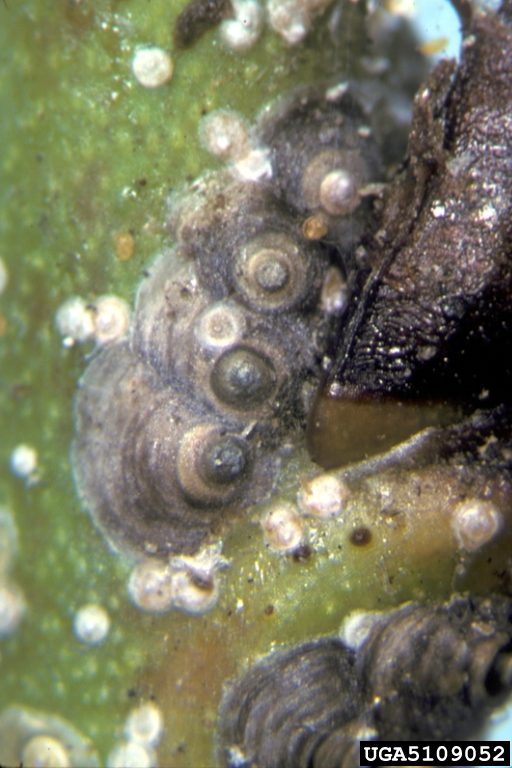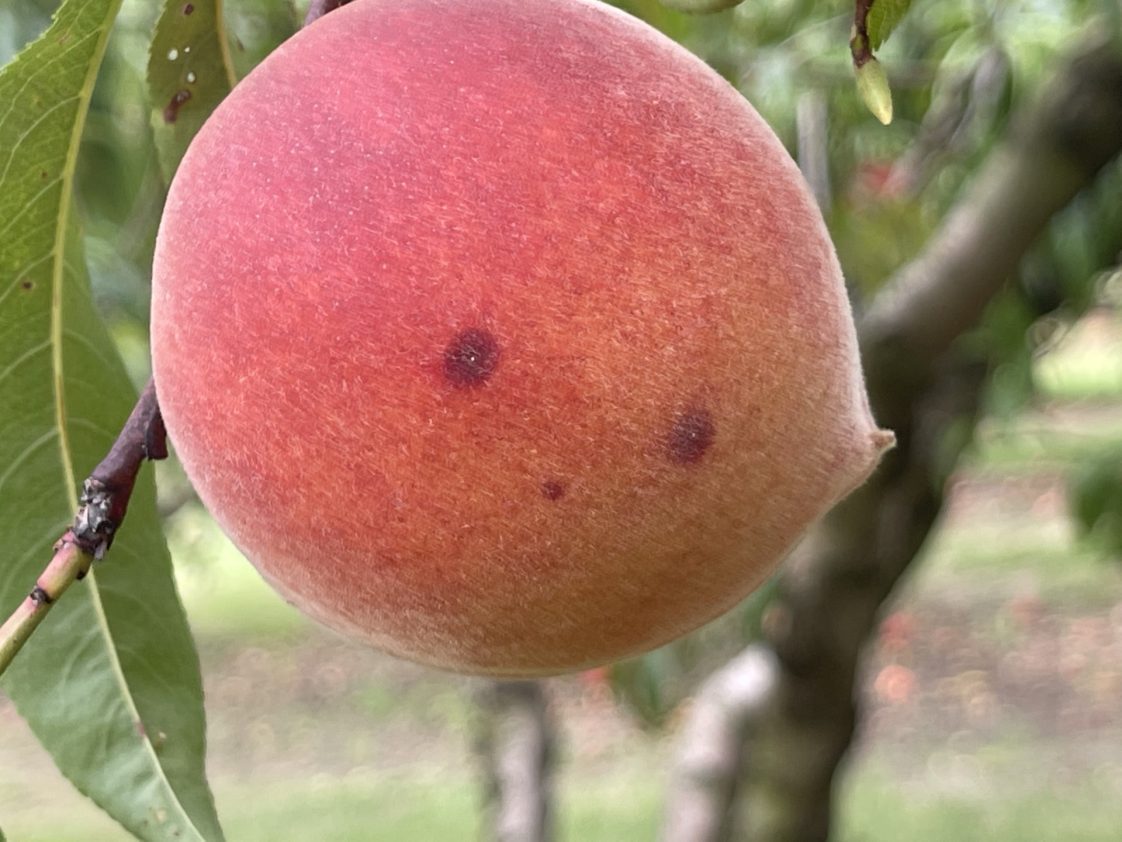Crop Production

San Jose Scale is a significant pest of peach in the Southeast, capable of causing severe damage to trees and fruit. Effective management of this pest requires a combination of monitoring, cultural practices, and chemical treatments.
Signs and Symptoms of San Jose Scale Infestation

San Jose Scale adults. United States National Collection of Scale Insects Photographs , USDA Agricultural Research Service, Bugwood.org
San Jose Scale is a small, round insect that forms a hard, gray or black scale-like covering on tree bark, branches, and fruit. The insects are typically 1.5 to 2 millimeters in diameter. Regular inspection of trees, particularly in the late winter and early spring, is crucial. Look for mature scales on the branches and twigs during this time of year. During the growing season, use double-sided sticky tape to monitor crawler (the mobile young stage) activity, as they are the most vulnerable stage for control.
Why San Jose Scale is a Significant Threat
San Jose Scale insects withdraw nutrients from the tree by piercing the bark with their mouthparts, weakening the tree, and reducing its vigor. Heavy infestations can lead to decreased fruit size, poor coloration, and even premature fruit drop. In severe cases, San Jose Scale infestations can cause scaffold dieback or tree death. San Jose Scale can reproduce multiple times per year, leading to rapid population growth and widespread infestations if not managed promptly.
Effective Management Strategies
Regular scouting is crucial. If San Jose Scale has been documented in an orchard, growers should inspect trees frequently during the growing season to determine crawler activity and make insecticide applications accordingly. Beneficial insects such as parasitic wasps and lady beetles can help control San Jose Scale populations. While relying on beneficial insects may not be a good stand-alone strategy, it is important to avoid broad spectrum insecticides to manage for these natural enemies.
Dormant oil sprays applied at 2 to 4 percent during the dormant season can reduce populations by suffocating scale insects. For applications made to partially dormant trees or after bud swell, rates should be reduced to 1 to 2 percent. Insecticides such as Centaur, Esteem, or Movento may be used during the growing season, particularly when crawlers are active.
Preventing Future Infestations
Proper pruning to remove infested branches, maintain good airflow, and improve spray coverage can help reduce the scale population. Pruned limbs containing San Jose Scale should be removed from the orchard and in some instances burned to prevent future outbreaks. Removing natural host plants around the perimeter of the orchard may also help reduce the potential for scale infestations. Consistent scouting and early detection are key to preventing San Jose Scale outbreaks.

